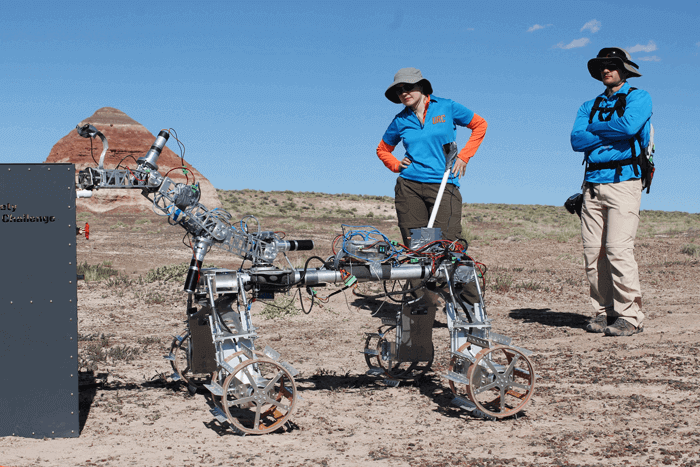Polish students are building a planetary rover with 3D printed parts, specially designed to explore the bumpy terrain of the planet Mars.
In 2012, the Mars rover Curiosity landed on the Red Planet’s Gale crater, powered by a radioisotope thermoelectric generator. The vehicle weighs 899 kg and has a guaranteed operational period of 1 Martian year (98 weeks).
Every single kilogram sent into space requires huge amounts of energy, and even the slightest flaws or inadequacies could result in the failure of an entire mission. Which is where 3D printing can help.
A group of students from Warsaw’s University of Technology have created their own Mars rover, the Automatic Martian Research (ARES) series of four-wheeled exploratory vehicles capable of independently exploring the surface of the Red Planet.
The students belong to a Student Astronomical Study Group, and are using Zortrax M200 3D printers to design and make each rover’s wheels and housing for its ultrasonic sensor.
Using Zortrax’s Z-ULTRAT printing materials resulted in a significantly reduced weight of the final project. Impressively, components such as the rover’s gripper, which traditionally would weigh 33 grams, had its weight reduced down to 10 grams after it was 3D printed.
The most recent version, ARES 2, competed with other prototypes from some of the largest technological universities in the world, taking part in competitions like the 2015 University Rover Challenge and reaching the final ten.

Benefits of 3D Printing a Planetary Rover
3D printing technology opens up a vast array of possibilities for astronautics research and work. The various properties of 3D printing materials can be used to create functional elements for both the interior and exterior parts of a space station.
ARES has had three different housings since its creation in 2009. Thanks to easily accessible 3D printing solutions, students have refined the design and fabricated a more durable upper housing for the vehicle, as well as a new battery, lights and an entire control system.
This project was carried out in cooperation with the Faculty of Design at the Academy of Fine Arts, which was responsible for designing the vehicle’s new upper housing.
The benefits of 3D printing are that it is easy to create extremely complex components, quickly produce prototypes and replace parts easily, as well as reducing the weight of the entire build, which is important in competitions.
The Student Astronomical Study Group will present their project at the 2016 US University Rover Challenge later this summer. Check out this video of the new and improved ARES 3 in action.
License: The text of "Exploring Mars with a 3D printed Planetary Rover" by All3DP is licensed under a Creative Commons Attribution 4.0 International License.